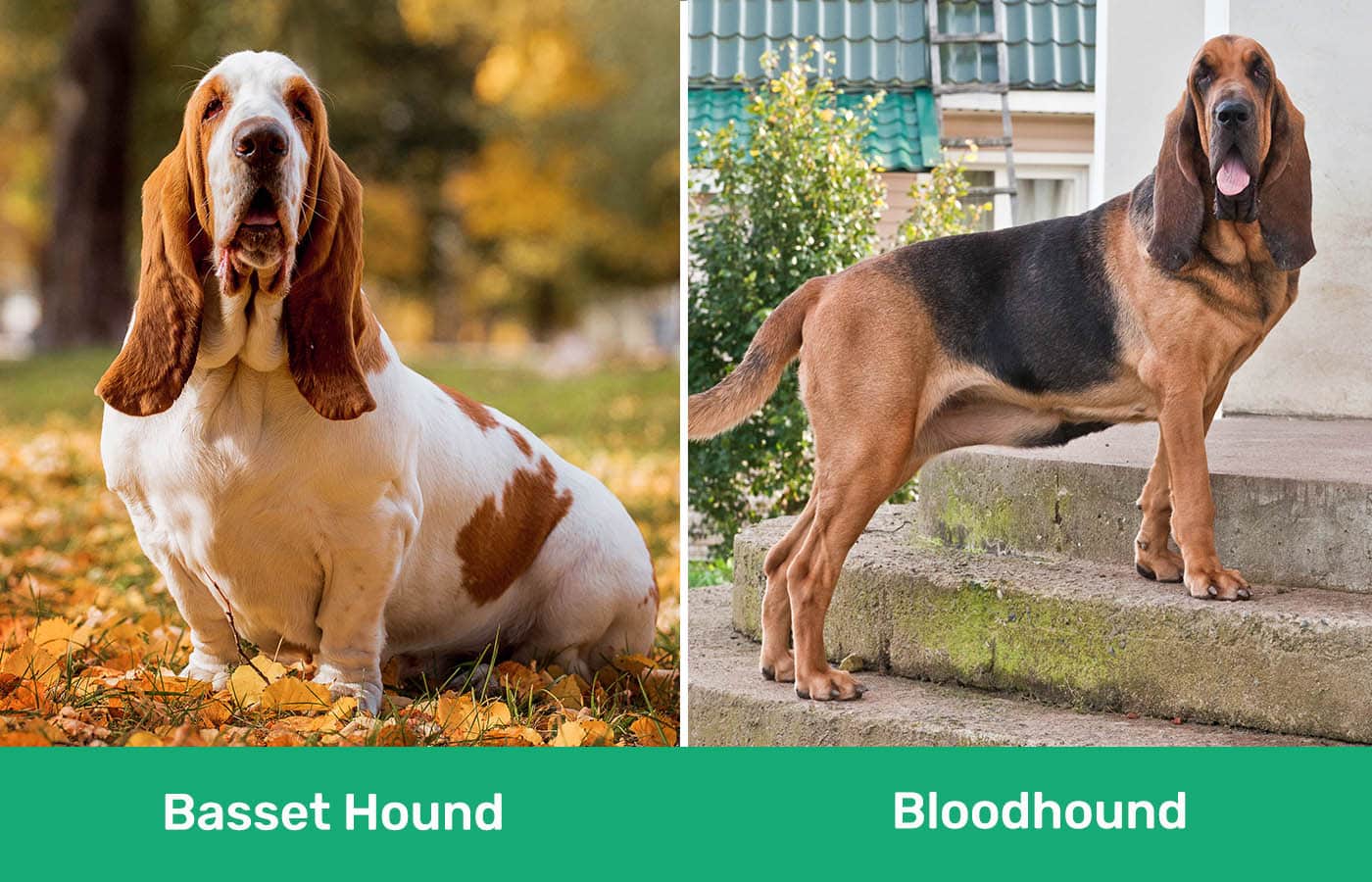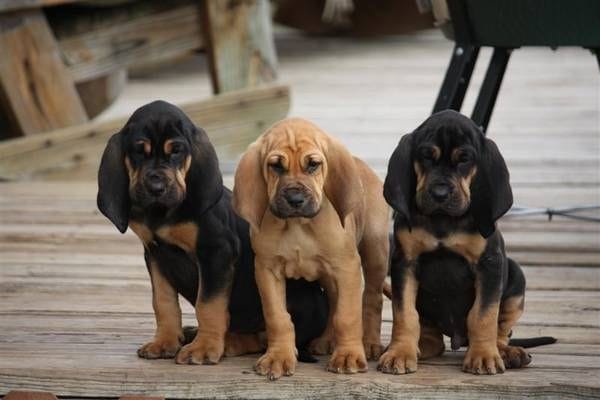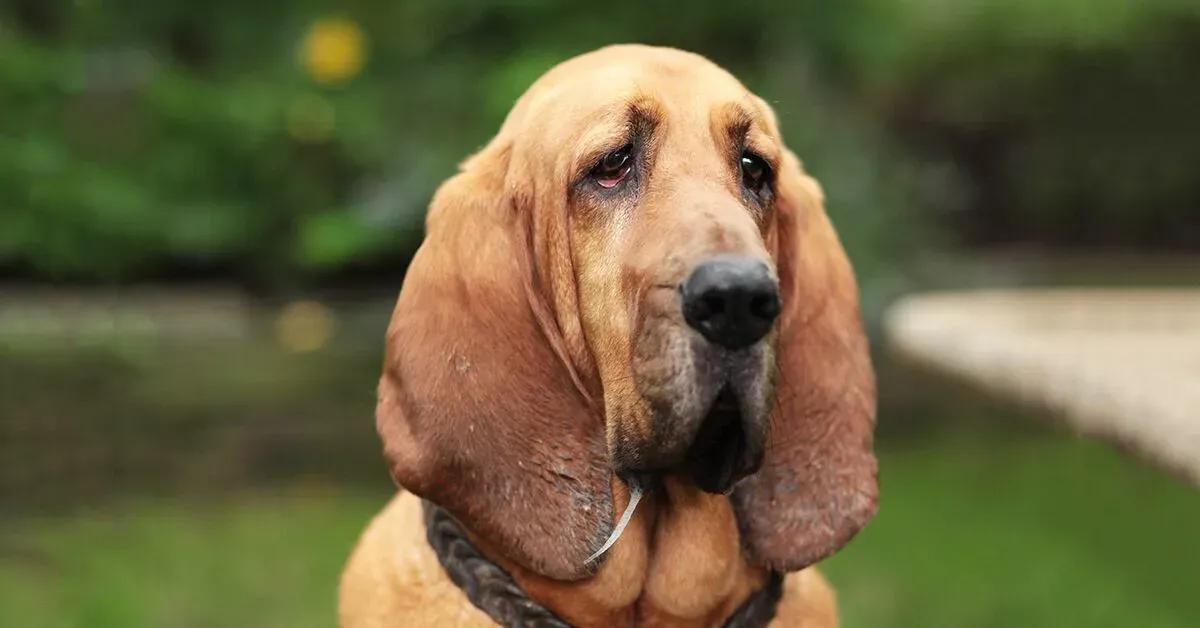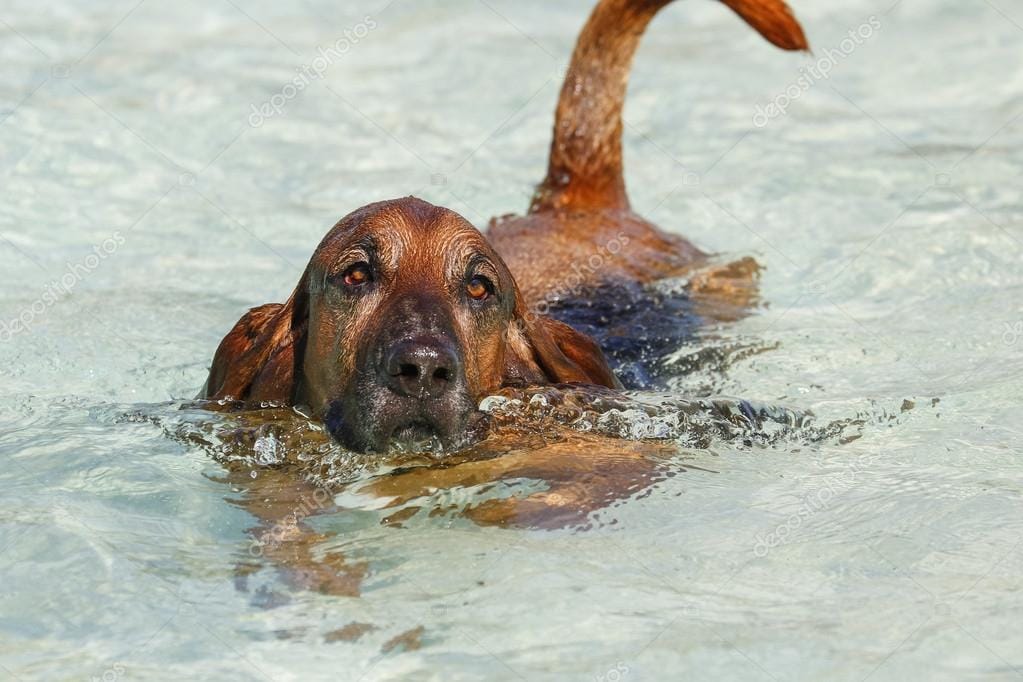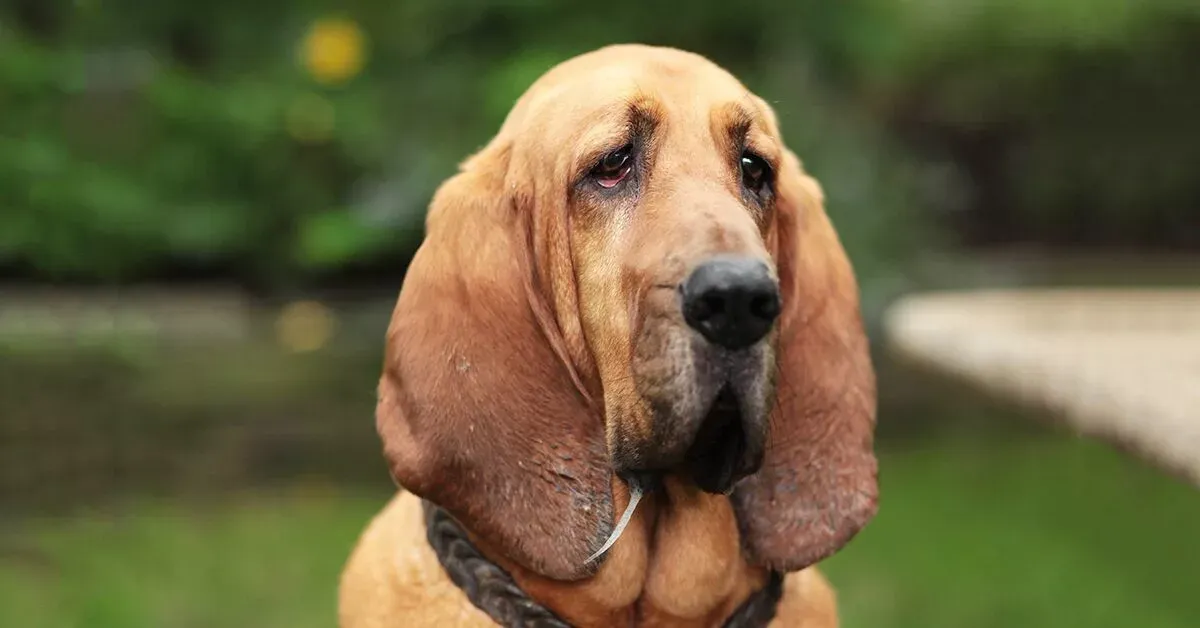Do you believe in the existence of a canine detective with an extraordinary ability to follow scents across vast distances, aiding law enforcement and uncovering lost souls? If not, allow me to introduce you to the remarkable world of the bloodhound, a breed of dog renowned for its unparalleled olfactory prowess and uncanny tracking skills. In this article, we will embark on a journey to understand the biology, history, training techniques, and real-world applications of these remarkable scent sleuths. So, let's delve into the captivating universe of the bloodhound and explore the depths of its extraordinary capabilities.
Introduction of Bloodhound
Imagine possessing a sense of smell so advanced that you could detect and follow a single scent trail amidst a labyrinth of aromas. This superpower belongs to none other than the bloodhound, a breed of dog that has captured the imagination of humans for centuries. With olfactory receptors numbering in the billions, bloodhounds have earned their reputation as the ultimate tracking companions.
A Brief Historical Glimpse
The bloodhound's lineage can be traced back to ancient civilizations, where their exceptional scenting abilities were employed in various pursuits, from hunting games to locating missing persons. Their storied history paints a picture of a loyal and steadfast companion cherished for its keen nose and gentle demeanor.
The Science Behind the Scent: Anatomy and Olfaction
To comprehend the bloodhound's olfactory capabilities, we must delve into the intricate anatomy of its scent-detecting apparatus. From specialized nasal structures to an astonishingly large olfactory bulb, we uncover the biological marvels that empower bloodhounds to perceive and analyze scents with astounding precision.
Beyond the Scent: Traits and Temperament
When one thinks of a bloodhound, the mind often conjures images of a determined tracker with an unmatched sense of smell. However, there's much more to these remarkable canines than their olfactory prowess. In this section, we'll delve into the multifaceted world of bloodhound traits and temperament, uncovering the endearing qualities that make them beloved companions and treasured members of families around the world.
1. Affectionate and Friendly: A Heart of Gold
Beneath the bloodhound's noble exterior lies a heart brimming with affection and warmth. Known for their gentle and friendly nature, bloodhounds have a special knack for forming strong bonds with their human companions. Their affectionate demeanor and unwavering loyalty make them wonderful additions to families of all sizes, providing comfort, companionship, and endless tail wags.
2. Patient and Tolerant: A Calm Presence
Bloodhounds possess a remarkable level of patience and tolerance, making them well-suited for households with children and other pets. Their calm and composed nature allows them to navigate lively environments with grace, and their innate sense of understanding helps them adapt to various situations, fostering harmonious relationships with both humans and animals.
3. Curious and Inquisitive: The Explorer's Spirit
While their noses may lead them on grand scent-seeking adventures, bloodhounds also exhibit an inquisitive nature that extends beyond their olfactory pursuits. They approach the world with a sense of wonder, always eager to explore new scents, sights, and experiences. This curiosity not only adds to their charm but also underscores their zest for life.
4. Playful and Lively: The Joyful Spirit
Beneath their stately appearance lies a playful and vivacious spirit that delights in moments of joy and exuberance. Bloodhounds enjoy interactive dog toys play and can be surprisingly energetic, especially when engaged in scent activities that stimulate their minds and bodies. Their playful antics and boundless enthusiasm can bring a sense of delight and laughter to any household.
5. Independent Thinkers: A Thoughtful Approach
Bloodhounds possess a unique blend of intelligence and independent thinking. While their tracking abilities are nothing short of astonishing, they also have a knack for problem-solving and a natural curiosity that drives them to explore their surroundings. This independent streak adds an element of intrigue to their personalities, making every interaction with a bloodhound an engaging experience.
6. Loyal Companions: A Bond Beyond Measure
Perhaps one of the most cherished traits of the bloodhound is its unwavering loyalty. Once a bond is formed between a bloodhound and its human companion, it becomes a connection that transcends words. This loyalty is a testament to the breed's deep-rooted desire to be an integral part of the family unit, offering steadfast companionship and a listening ear, no matter the circumstances.
Bloodhound Physical Characteristics
These distinctive physical characteristics are just the beginning of what makes the bloodhound a true masterpiece of nature. In this section, we'll take a closer look at the remarkable physical traits that define this breed and contribute to its iconic appearance.
1. The Eloquent Ears: A Touch of Grandeur
One of the most captivating features of the bloodhound is its ears. Long, pendulous, and velvety to the touch, these ears serve a dual purpose. Not only do they enhance the breed's aesthetic allure, but they also play a crucial role in its extraordinary olfactory capabilities. By sweeping the ground as the bloodhound follows a scent trail, the ears help to funnel and capture scent particles, aiding the dog in its tracking endeavors.
2. The Soulful Eyes: Windows to the Heart
Gazing into the eyes of a bloodhound is like peering into the depths of its gentle soul. These large, brown eyes exude warmth and kindness, complementing the breed's friendly and affectionate nature. While the bloodhound's eyes may not contribute directly to its tracking prowess, they certainly add to its endearing charm and make it a truly irresistible companion.
3. The Majestic Mane: A Mark of Distinction
The bloodhound's wrinkled, loose skin forms what can be described as a "mane" around its neck and face. These folds of skin not only lend an air of regality to the breed's appearance but also serve a functional purpose. As the bloodhound tracks scents across diverse terrain, its skin wrinkles trap scent particles, directing them toward the dog's keen nose. This unique adaptation showcases the intricate relationship between form and function in the natural world.
4. The Stalwart Frame: Built for Tracking
Beneath its velvety ears and expressive eyes, the bloodhound boasts a robust and muscular frame. This breed's large build and strong physique are tailored for endurance and stamina, traits that are indispensable for its role as a dedicated tracker. A bloodhound's powerful legs and well-structured body enable it to navigate various terrains with ease, from dense forests to rugged landscapes, ensuring that it can pursue scent trails for extended distances without tiring.
5. The Remarkable Coat: A Matter of Utility
Bloodhounds sport a short and dense coat that comes in a variety of dog coat colors, including black and tan, liver and tan, and red. While the coat's primary function is not related to tracking, it offers protection and insulation for the dog during its outdoor pursuits. Additionally, the coat's texture helps to trap and retain scent particles, contributing to the bloodhound's exceptional olfactory prowess.
6. The Unmistakable Gait: Elegance in Motion
Observing a bloodhound in motion is akin to witnessing poetry in motion. Despite its large size, the bloodhound moves with grace and elegance, its head held high and its ears swaying rhythmically. This unique gait not only adds to the breed's aesthetic appeal but also showcases its inherent agility, a quality that allows it to traverse challenging landscapes and follow scent trails with finesse.
In the intricate tapestry of the natural world, the bloodhound stands as a masterpiece of design and functionality. From its eloquent ears that channel scents to its soulful eyes that reflect its gentle nature, every physical characteristic of the bloodhound has a purpose and a story to tell. As we marvel at the breed's majestic mane, robust frame, and unique gait, we come to appreciate the harmonious blend of form and function that defines this remarkable canine companion.
Bloodhound Weight and Size
When it comes to size and weight, the bloodhound commands attention with its imposing presence and robust build. This section delves into the dimensions that define the bloodhound, shedding light on its substantial stature and the factors that contribute to its unique physique.
1. Stature: A Towering Presence
The bloodhound is undeniably a large and commanding breed, standing proudly as one of the tallest among its canine counterparts. Adult bloodhounds typically reach a height ranging from 23 to 27 inches (58 to 69 cm) at the shoulders. This towering stature, coupled with the breed's well-proportioned body, lends an air of grandeur to the bloodhound's overall appearance.
2. Weight: Substantial and Stalwart
When it comes to weight, the bloodhound's robust frame certainly leaves an impression. Adult bloodhounds generally weigh between 80 to 110 pounds (36 to 50 kg), with males often tipping the scales on the higher end of this range. This substantial weight is a testament to the breed's muscular build and inherent strength, attributes that are essential for its role as a dedicated tracker.
3. Growth and Development: From Pup to Majestic Hound
The journey from a bloodhound puppy to a full-grown majestic hound is a fascinating one. Bloodhounds typically experience a rapid growth phase during their early months, with their size and weight increasing significantly. Proper nutrition, exercise, and regular veterinary care are crucial during this critical developmental period to ensure that the bloodhound reaches its full potential in terms of both size and overall health.
4. Size Diversity: Embracing Individuality
While there are general guidelines for bloodhound size and weight, it's crucial to recognize that individual variations exist within the breed. Factors such as genetics, dog food diet, and overall health can influence a bloodhound's growth trajectory and eventual size. This diversity is a testament to the rich tapestry of nature and the unique characteristics that make each bloodhound a one-of-a-kind masterpiece.
5. Size and Functionality: The Perfect Balance
The bloodhound's size and weight are not merely matters of aesthetics; they are intricately linked to the breed's functionality and purpose. The substantial build and impressive stature of the bloodhound enable it to navigate diverse terrains and follow scent trails over extended distances without fatigue. This blend of size and functionality is a prime example of nature's meticulous design at work.
Bloodhound Nutrition and Food
Bloodhounds, like all dogs, require a balanced and nutritious diet to maintain their health and well-being. Here are some key points to consider when it comes to Bloodhound nutrition:
- High-Quality Dog Food: Choose a high-quality commercial dog food that is specifically formulated for large and active breeds. Look for a brand that lists meat as the primary ingredient and provides a balance of protein, carbohydrates, fats, vitamins, and minerals.
- Protein: Protein is essential for muscle development and overall health. Bloodhounds require a protein-rich diet. Look for dog foods with a protein content of around 18-22%.
- Moderate Fat: Bloodhounds have a slower metabolism, so it's important to avoid overfeeding them with excessive fats. Aim for a dog food that contains around 8-15% fat.
- Carbohydrates: Carbohydrates provide energy. Whole grains like brown rice and oats are good sources of complex carbohydrates. Avoid excessive amounts of fillers like corn or soy.
- Fruits and Vegetables: Incorporate fruits and vegetables into your Bloodhound's diet as they provide essential vitamins, minerals, and fiber. Carrots, sweet potatoes, and blueberries are examples of healthy options.
- Portion Control: Bloodhounds are prone to obesity, so it's crucial to measure their food portions and avoid overfeeding. Consult with your veterinarian to determine the appropriate portion size based on your dog's age, weight, and activity level.
- Avoid Harmful Foods: Some human foods are toxic to dogs, including grapes, raisins, chocolate, onions, garlic, and certain artificial sweeteners. Keep these foods out of reach.
- Hydration: Always provide fresh and clean water for your Bloodhound to ensure proper hydration.
- Feeding Schedule: Establish a consistent feeding schedule to regulate their digestion and prevent overeating. Adult Bloodhounds are typically fed twice a day.
- Monitor Weight: Regularly monitor your Bloodhound's weight and body condition. Adjust their food intake as needed to maintain a healthy weight.
- Consult a Veterinarian: Every dog is unique, and their nutritional needs may vary. Consult with a veterinarian to create a customized feeding plan based on your Bloodhound's individual requirements.
Remember that Bloodhounds, like all dogs, thrive on a diet that meets their nutritional needs and supports their overall health. It's important to provide them with a balanced and appropriate diet to ensure they lead a happy and active life.
Bloodhounds on Duty: Real-World Applications
1. Search and Rescue
When disaster strikes and lives hang in the balance, bloodhounds emerge as true heroes. Their ability to locate individuals trapped beneath rubble or lost in vast wilderness areas has earned them a revered role in search and rescue operations, providing solace to worried families and a glimmer of hope to the lost.
2. Criminal Investigations
In the realm of law enforcement, bloodhounds have proven invaluable. Armed with a unique scent signature, they assist in solving crimes by tracking suspects, locating evidence, and unraveling mysteries that might otherwise remain unsolved.
The Art of Training a Bloodhound:
1. Early Puppyhood: Laying the Foundation
The journey to becoming a skilled bloodhound tracker begins in puppyhood. Discover the essential steps and techniques involved in cultivating a pup's innate scent-detection abilities, setting the stage for a successful tracking career.
2. Scent Discrimination: Polishing the Craft
Refining a bloodhound's scent discrimination skills requires patience and expertise. Uncover the training methods used to teach these remarkable dogs to differentiate between a myriad of scents and focus on the specific trail they've been tasked to follow.
3. Human-Bloodhound Bond: Trust and Teamwork
A strong partnership between handler and hound is essential for successful tracking dogs. Explore the dynamics of the human-bloodhound bond, and learn how trust, communication, and cooperation form the bedrock of a harmonious working relationship.
The Bloodhound in Popular Culture and Legacy
Bloodhounds have left an indelible mark on literature, cinema, and popular culture. Explore their presence in books, movies, and television shows, and uncover how their legendary status continues to captivate audiences worldwide.
As we conclude our exploration, we pay homage to the bloodhound's enduring legacy. Their unwavering dedication, unwavering loyalty, and exceptional abilities remind us of the extraordinary bond between humans and animals, a bond that transcends time and leaves an indelible mark on our hearts.
Bloodhound Average Cost
On average, the cost of a bloodhound from a reputable breeder can range from $800 to $1,500 or more. This price may include initial vaccinations, health checks, and sometimes even basic training. It's important to note that while a higher price may initially seem daunting, it often reflects the breeder's commitment to responsible breeding practices and the overall well-being of the puppies.
Conclusion
In a world saturated with technological marvels, the bloodhound stands as a testament to the power of nature's design. With an olfactory prowess that defies comprehension, these remarkable dogs have woven themselves into the fabric of human history, leaving an indelible impression on society. From lifesaving search and rescue missions to crime-solving escapades, the bloodhound's contributions are immeasurable. So, the next time you catch a fleeting whiff of a scent work carried by the wind, remember the bloodhound and its extraordinary journey through time, scent, and the human heart.
FAQs
Q1: How far can a bloodhound track a scent?
A: Bloodhounds have been known to track scents over distances of up to 130 miles or more, showcasing their incredible olfactory capabilities.
Q2: Are bloodhounds suitable as family pets?
A: Absolutely, Bloodhounds are affectionate and gentle dogs that can make wonderful family companions, provided they receive proper training and socialization.
Q3: Can bloodhounds track scents underwater?
A: While bloodhounds have an exceptional sense of smell, their tracking abilities are primarily suited to land. Tracking scents underwater is not their specialty.
Q4: Do bloodhounds require specialized care due to their droopy ears and wrinkles?
A: Yes, bloodhounds' ears and skin folds require regular cleaning and care to prevent infections. Routine maintenance and attention to hygiene are essential.
Q5: How long does it take to train a bloodhound for tracking purposes?
A: Training a bloodhound for tracking can take several months to a year, depending on the dog's aptitude, the training methods used, and the complexity of the tasks involved.
More Bloodhound articles for you enjoy:
